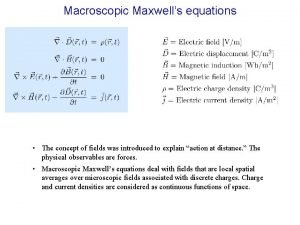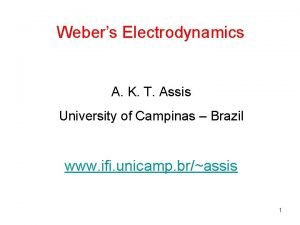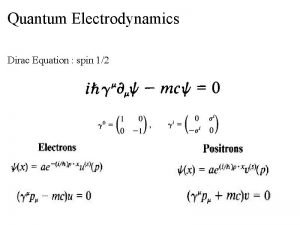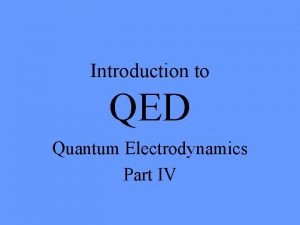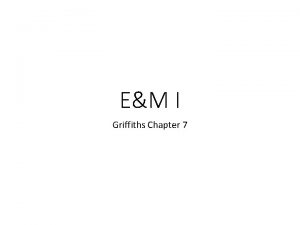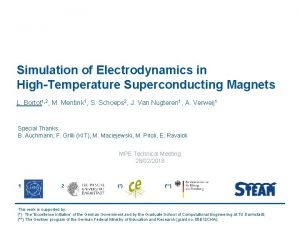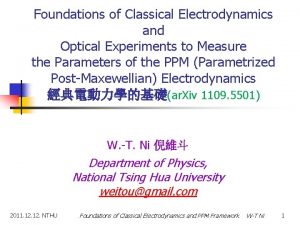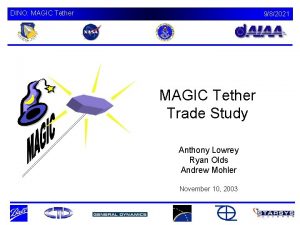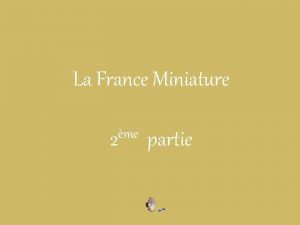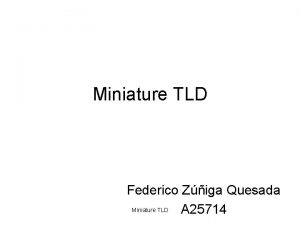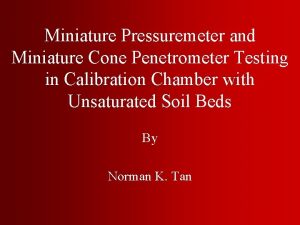Virtual Research Presentation Conference Miniature Tether Electrodynamics Experiment








- Slides: 8

Virtual Research Presentation Conference Miniature Tether Electrodynamics Experiment (Mi. TEE) Principal Investigator: Vritika Singh (382), JPL Co-Is: Marco Quadrelli (347 E), JPL; Brian Gilchrist & Darren Mc. Kague U. of Michigan Student Presenters: Maya Pandya, Sam Sharma, Anish Rajesh, Michael Ying, George Li, Nathaniel Kalantar , Max Housner, Derek Cheyne, Mitchell Miller, Liam Spence Program: SURP Assigned Presentation # RPC-266

Introduction • • Miniature Tether Electrodynamics Experiment (Mi. TEE) Goal: To develop and demonstrate key technologies for miniaturized (~10 - 30 m) low-power electrodynamic tethers (EDTs) as pico/femtoscale satellite propulsion. • First Cube. Sat from the team, Mi. TEE-1 (Pictured on the right), uses a 3 U Cube. Sat to characterize electrodynamics of electron current collection to a pico/femtosats (<200 gms) attached to a rigid 1 m boom • Second Cube. Sat, Mi. TEE-2, will replace 1 m boom with 10 -30 m EDT • Data from these missions will guide the technology development to successfully enable miniature electrodynamic tether propulsion pico/femtosats. • In the past three years, Mi. TEE-1 has matured from its initial design phase to the fabrication of a fully functional 3 U Cube. Sat. It will launch on the NASA sponsored ELa. Na 20 mission Mi. TEE-I with Langmuir probe and antenna deployed

Problem Description • • If validated through the Mi. TEE missions, electrodynamic tethers could help enable a new paradigm for sophisticated, ultra-small, positionable constellations of pico/femtosats (Pictured on the right) This in turn enables greater capacity for multipoint, simultaneous measurements or more frequent revisit measurements of a single locations. A short EDT provides its own gravity gradient attitude control, can serve as a possible high gain antenna (communications and science), and/or as a plasma probe. This ultimately would enable the development of constellation missions for ionospheric-thermospheric-magnetospheric (ITM) science that can be jointly proposed to NASA. Concept of ED tethers with pairs of femtosats as a maneuverable constellation

Methodology • Mi. TEE-2 will replace Mi. TEE-1’s 1 -M boom with a 10 -30 m electrodynamic Tether • Each Subsystem team is evaluating key redesigns for Mi. TEE-2 Key Redesign Tasks (By subsystem) • CDH - evaluate changing multiple MSP 430 architecture to single processor. Research commercial operating systems. • Comms - Evaluate simpler antenna, tether as antenna. Develop picosat comm system. Consider Globalstar or equivalent. Digitally rendered image of Mi. TEE-2 partially deployed and operating nominally in LEO

Methodology Mi. TEE-2 Key Redesign Tasks (Continued) • Plasma – Consider dual Langmuir Probe (twin probe) concept, improve emission current and modularize the subassembly, and evaluate Tether Dynamics of spacecraft • EPS - Evaluate combining CCPS (Constant Current Power Supply) and HVPS (High Voltage Power Supply) boards into one • OADCS – Develop more capable ADCS for tether operation • Structures - Replace 1 m boom with a (10 -30 m) tether deployment system for picosat • Mission ops - Evaluate deploying from ISS to reduce primary concerns for collisions Simplified overview of the Mi. TEE-2 EDT circuit depicting the Lorentz Force Equation F = IL x B

Fall 19 - Fall 20 Results: Mi. TEE-1 Completion of Mi. TEE-1 • Mi. TEE-1 Hardware and software completed • Mi. TEE-1 Mission Ops planning in progress Mi. TEE-1 Lessons Learned for Mi. TEE-2 Development • Better dimensional tolerance tracking • Incorporate I&T procedures early in design phase • Prototype spacecraft build-up plan early • Formalize system of dedicated student liaisons between all subsystem teams • Implement formalized timeline milestone goals early in the design phase Mi. TEE-1 with solar board removed from front face

Fall 19 - Fall 20 Results: Mi. TEE-2 Tiger Team Work • Defined Mi. TEE-2 Mission goals • Used Mission Goals to define subsystem goals • Started subsystem trade studies DARTS Training @ JPL • 4 UM students attending JPL DARTS Course September-October 2020 • Will develop an initial Mi. TEE-2 dynamics simulation using the DARTS software • Advisor: Dr. Marco Quadrelli (Mobility and Robotic Systems, 347 E) Education Through Multi-Semester/Multi-Year Experiential Opportunities = Mi. TEE • Goal 1: Deepen Technical knowledge while developing systems-thinking skills • Goal 2: Design skills, Team skills, Life-long learning skills

Publications and References 1. Bell, et al: Investigating Miniaturized Electrodynamic Tethers for Picosatellites and Femtosatellites, J. Spacecraft and Rockets, 54 (N. 1) 2017. 2. Bell, et al: Experimental investigation of electron collection by rectangular cuboid in a high-speed plasma, IEEE Plasma Sci, 45 (N. 7) 2017. 3. NRC report: Achieving Science with Cubesats: Thinking Inside the Box, http: //www. nap. edu/23503 4. Committee on the Planetary Science Decadal Survey, National Research Council of the National Academies, Vision and Voyages for Planetary Science in the Decade 2013– 2022, National Academies Press, Washington, DC, 2011. 5. http: //www. dshell. jpl. nasa. gov/DSENDS/index. php 6. B. E. Gilchrist, O. Leon, G. Miars, I. C. Bell III, S. G. Bilen, D. Winship, W. Faistenhammer, D. Yoon, D. Cheyne, R. Barnhart, J. Lafayette, Y. Liu, C. Wright, H. Tang, G. Jenkins, C. Cooper, “Picosat/Femtosatellite Electrodynamic Tether Propulsion”, 6 th Intl Conf on Tethers in Space, Madrid, Spain, June 12 -14, 2019. 7. O. Leon, W. Hoegy, J. Mc. Ternan, G. Miars, B. E. Gilchrist, “Correcting Langmuir Probe Measurements on Small Satellite Structures by Tracking the Spacecraft Potential using the Twin Probe Technique”, 6 th Intl Conf on Tethers in Space, Madrid, Spain, June 12 -14, 2019.
